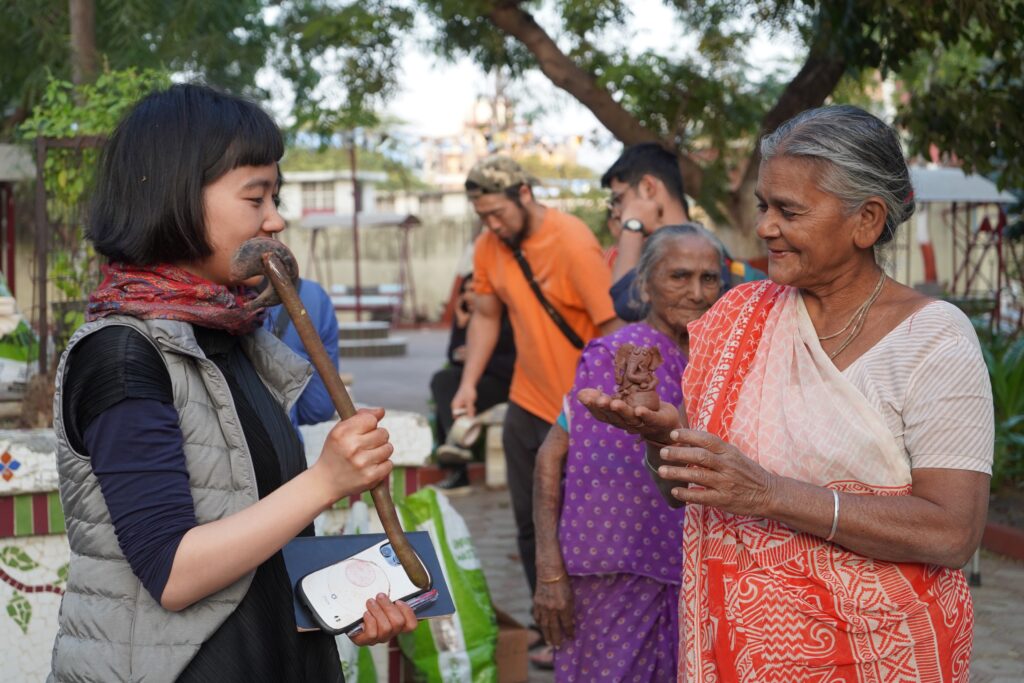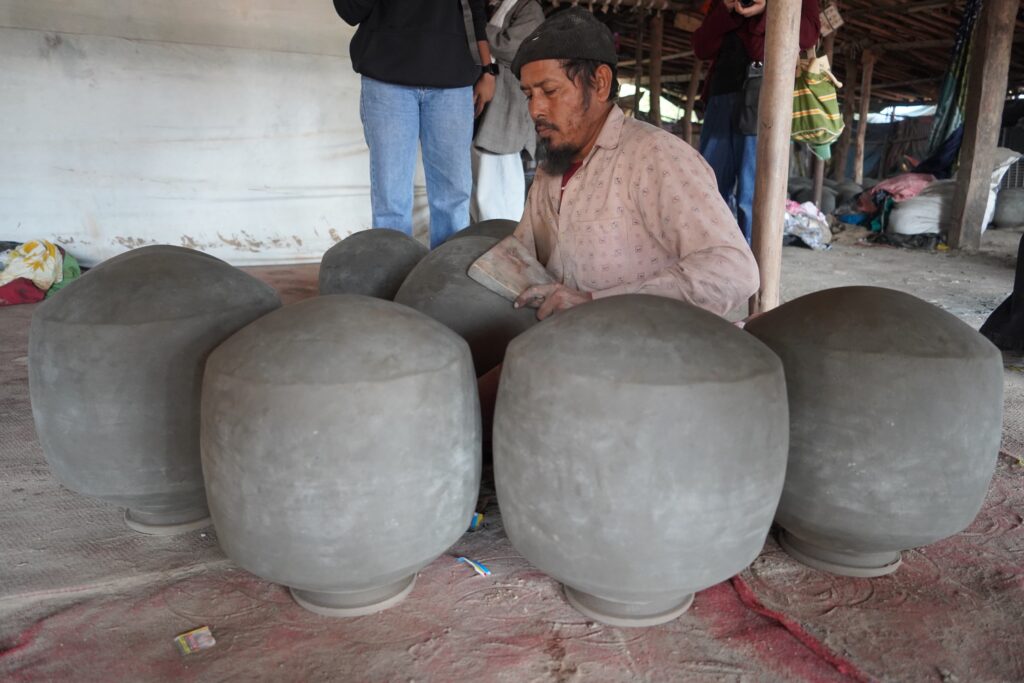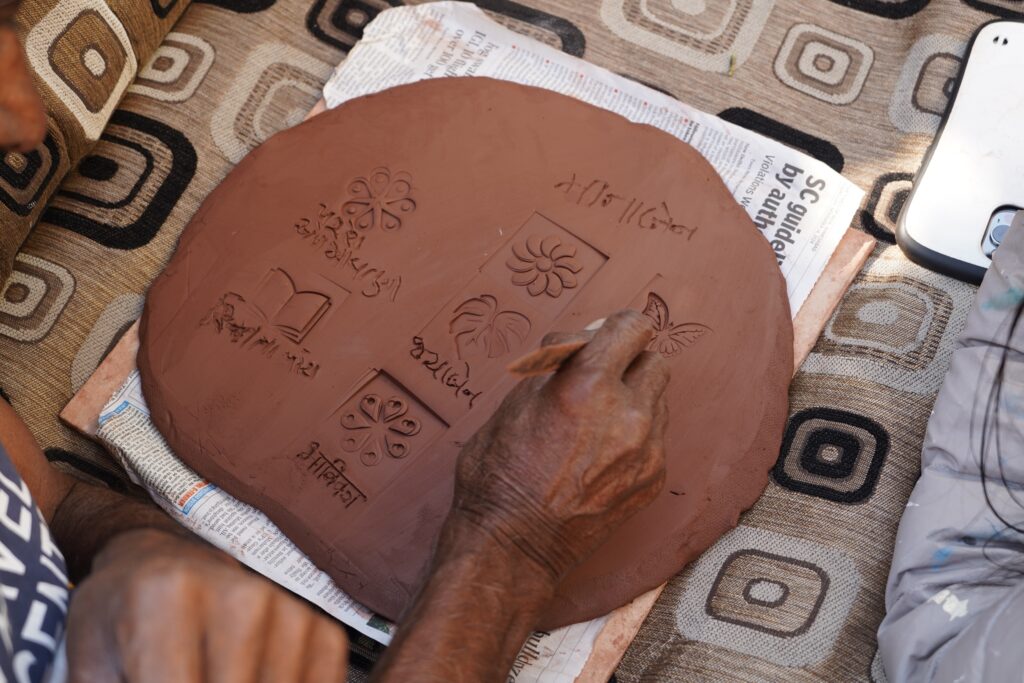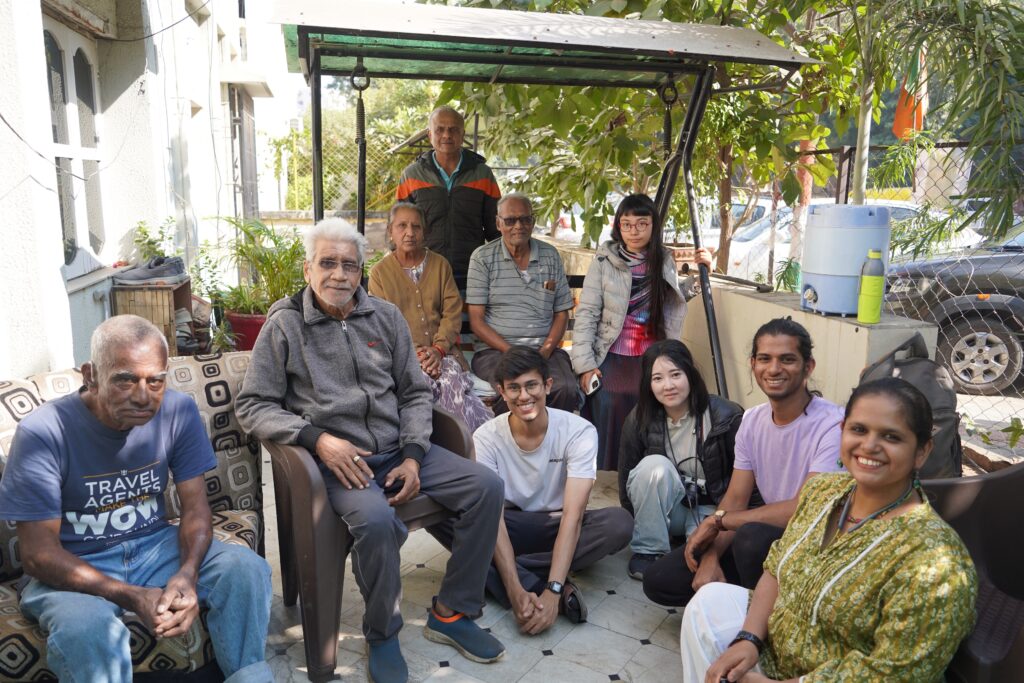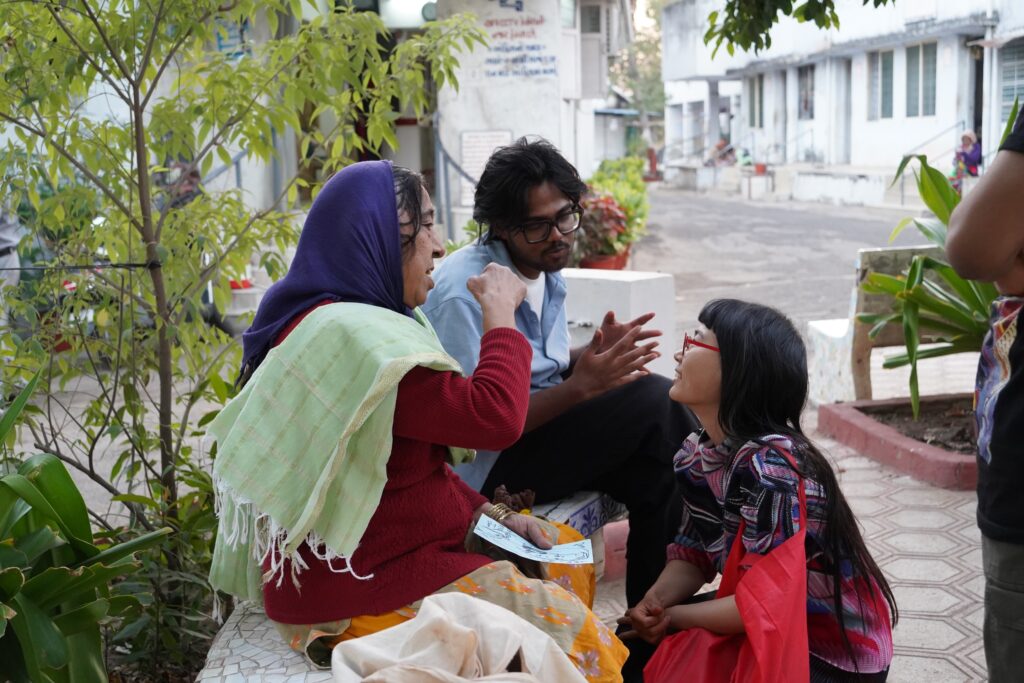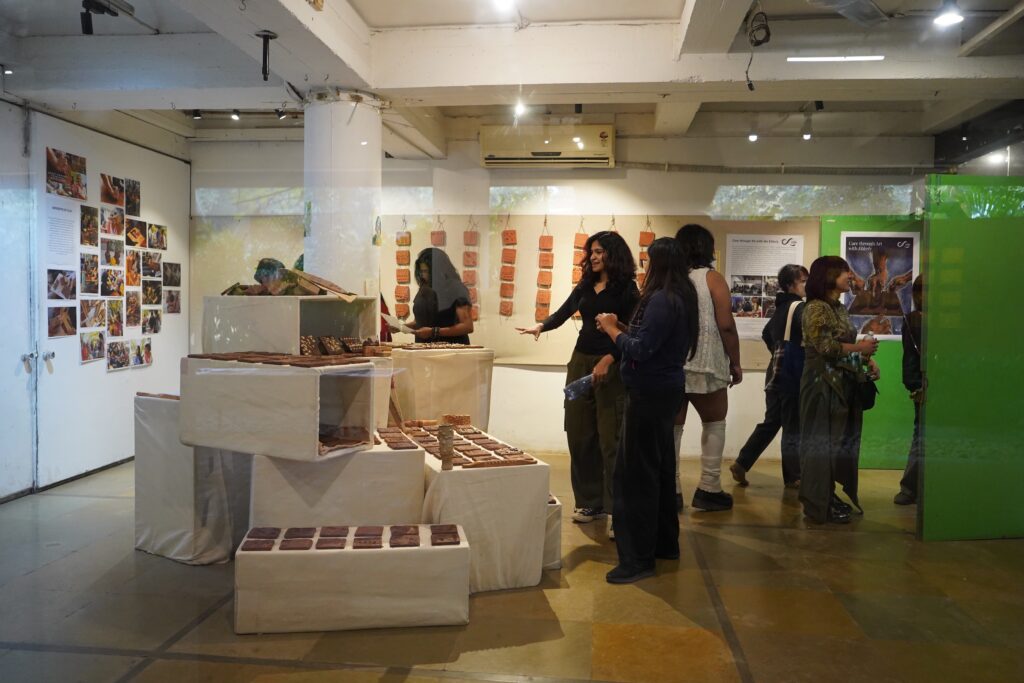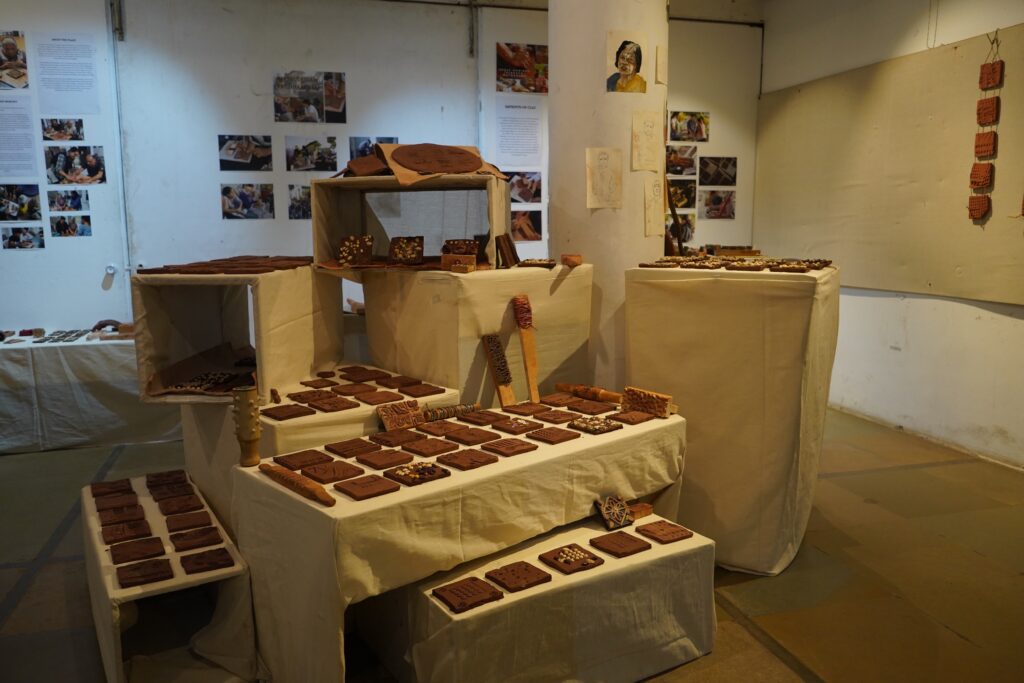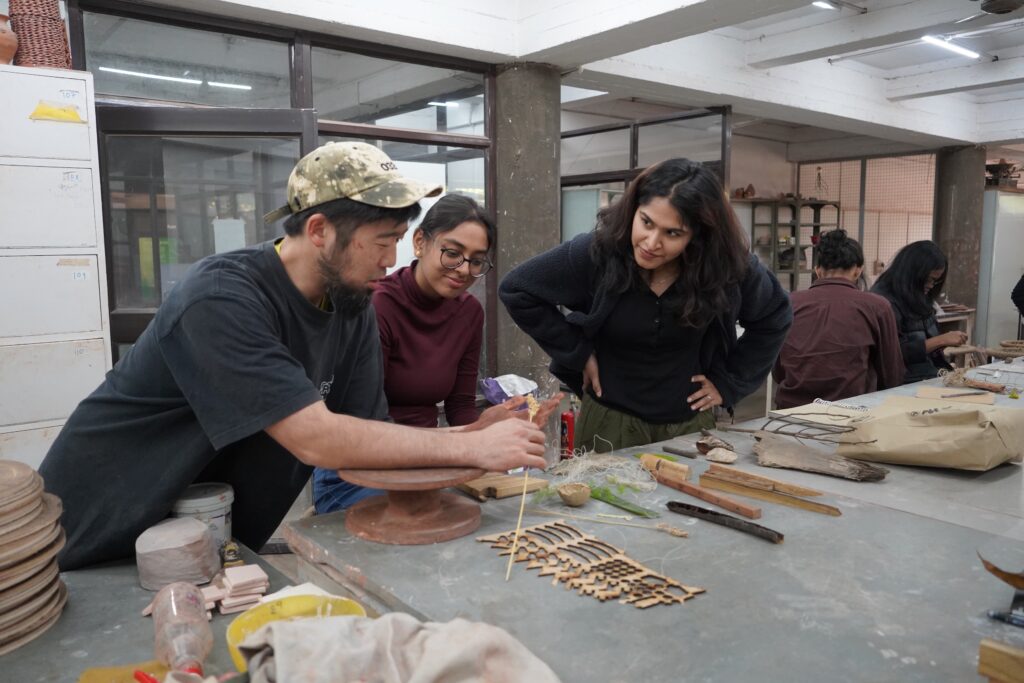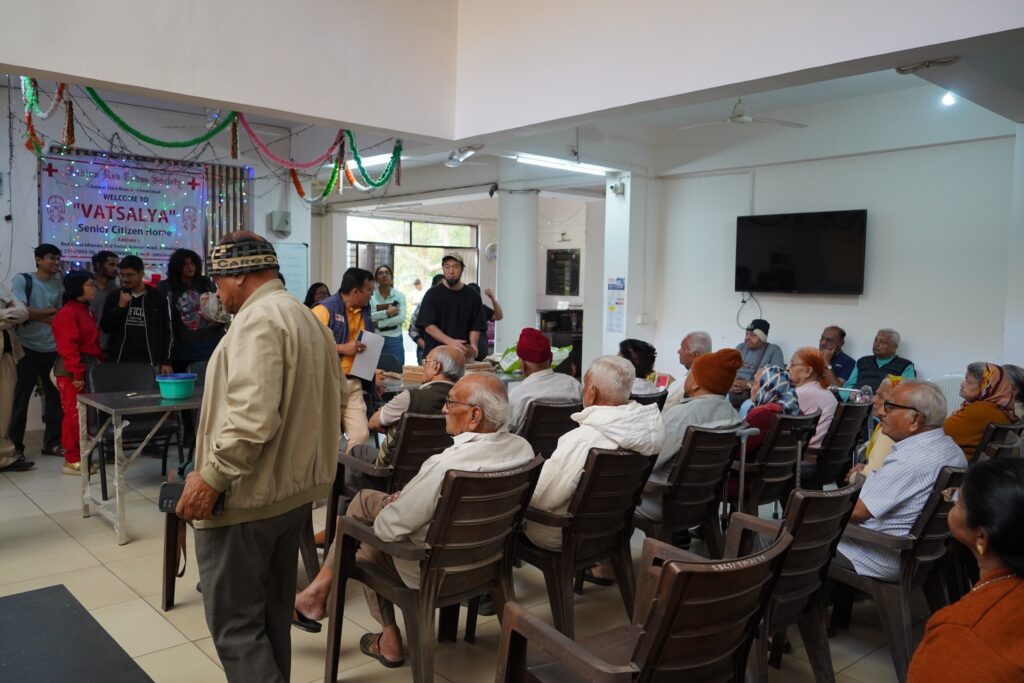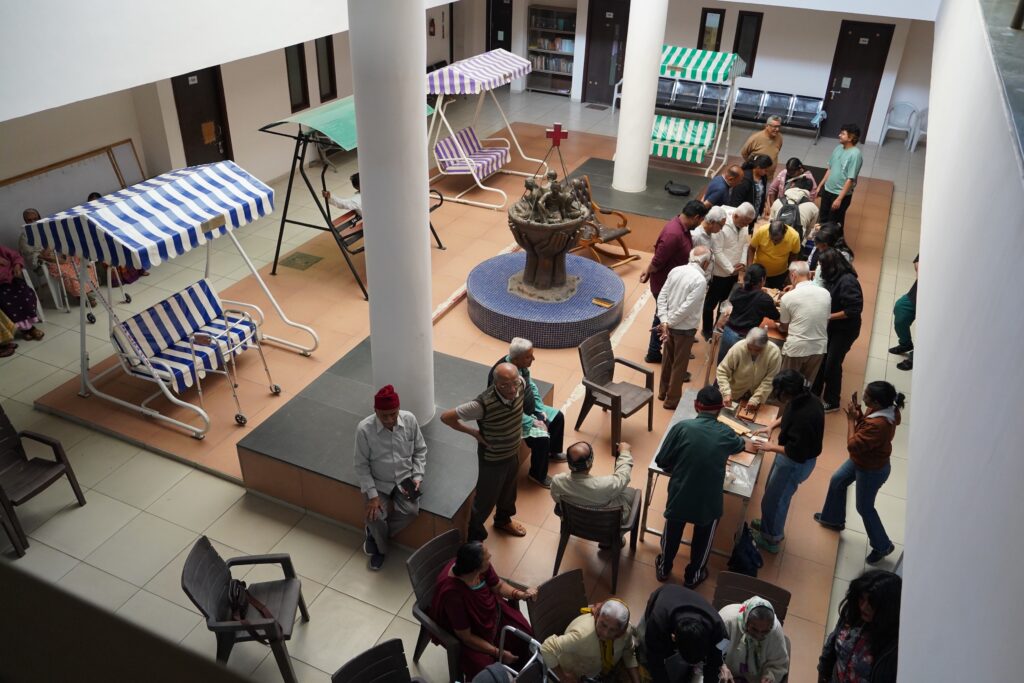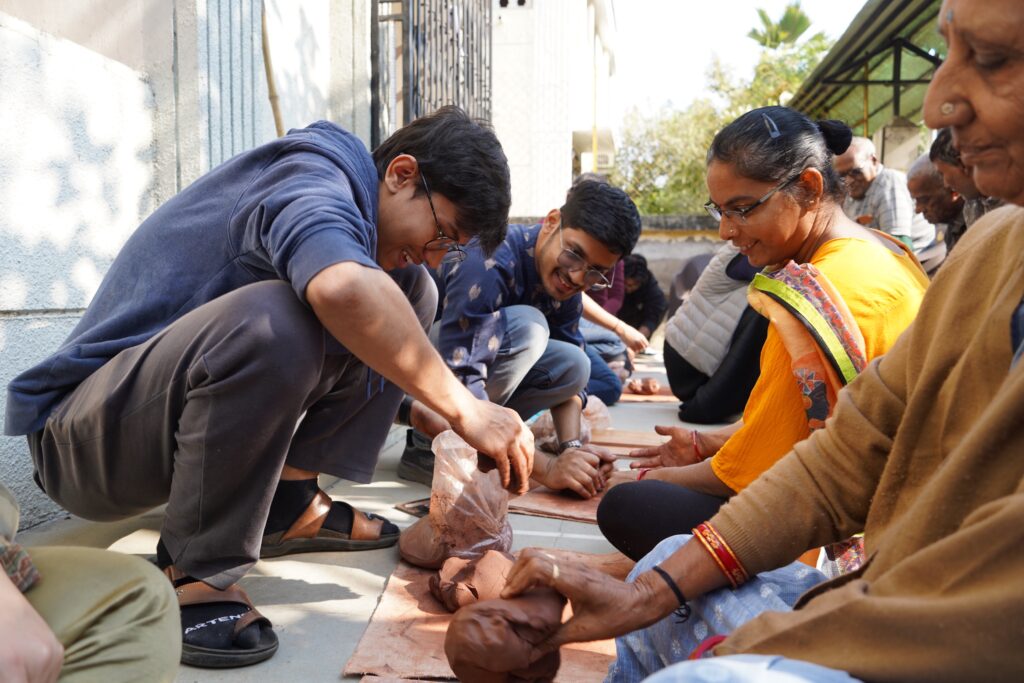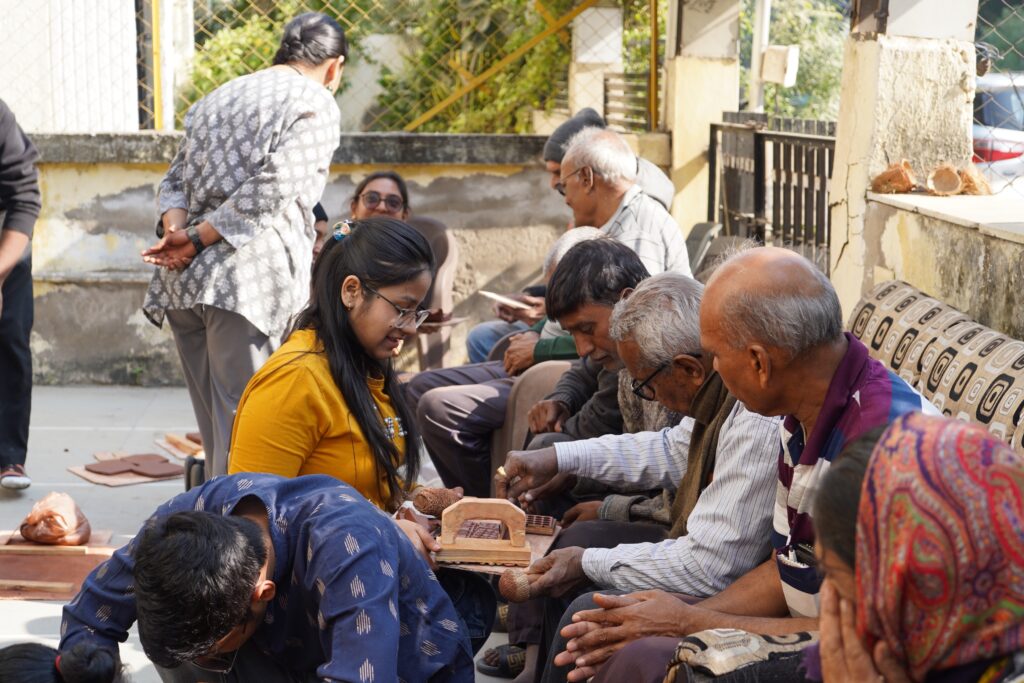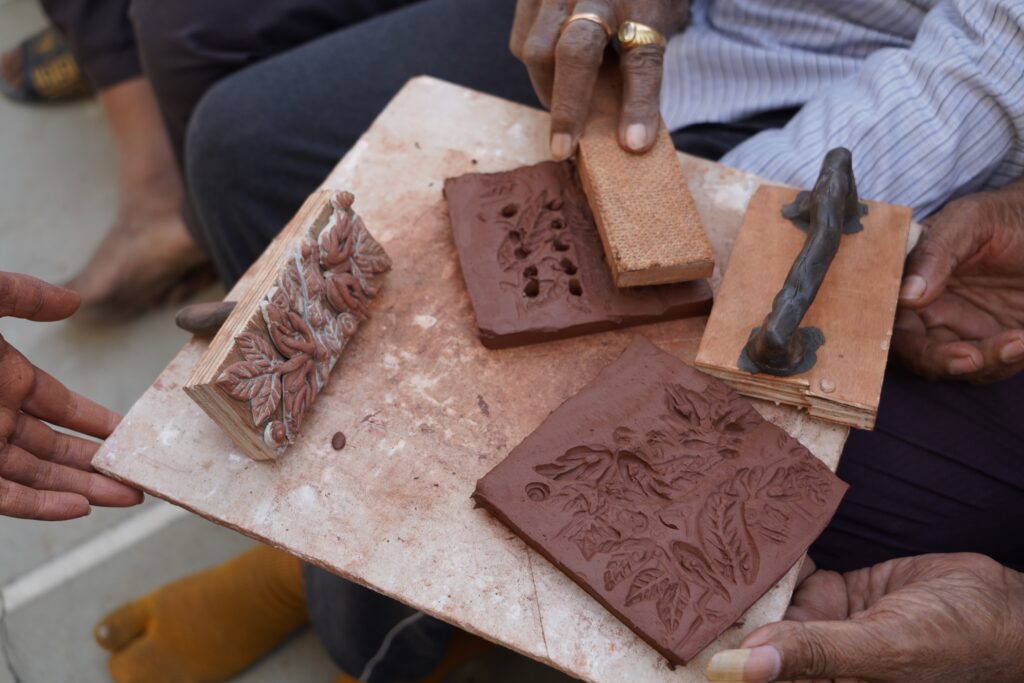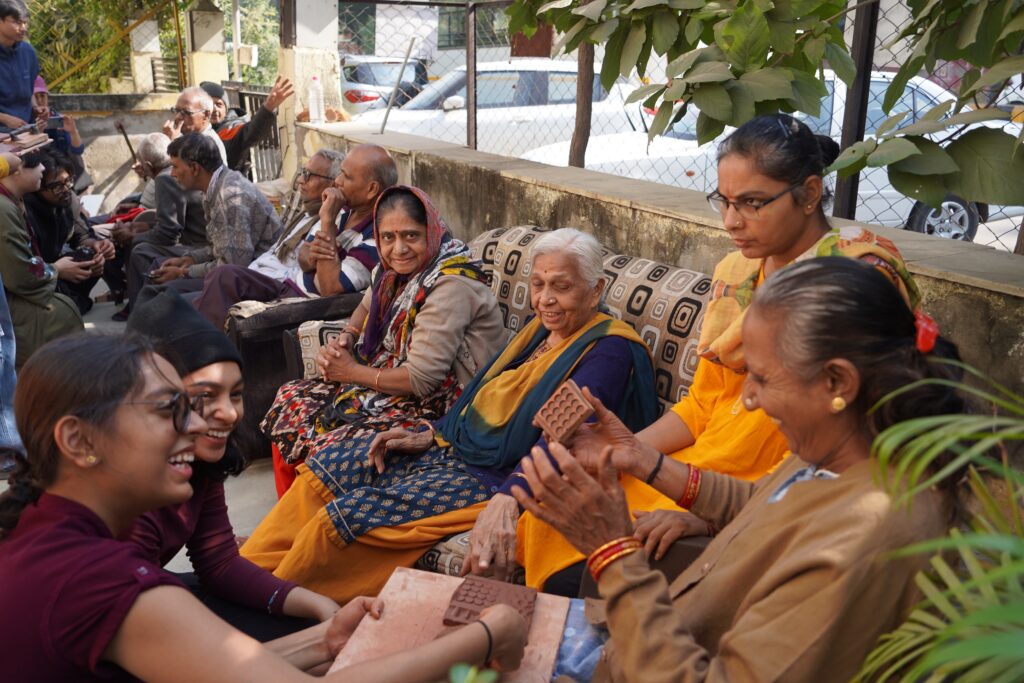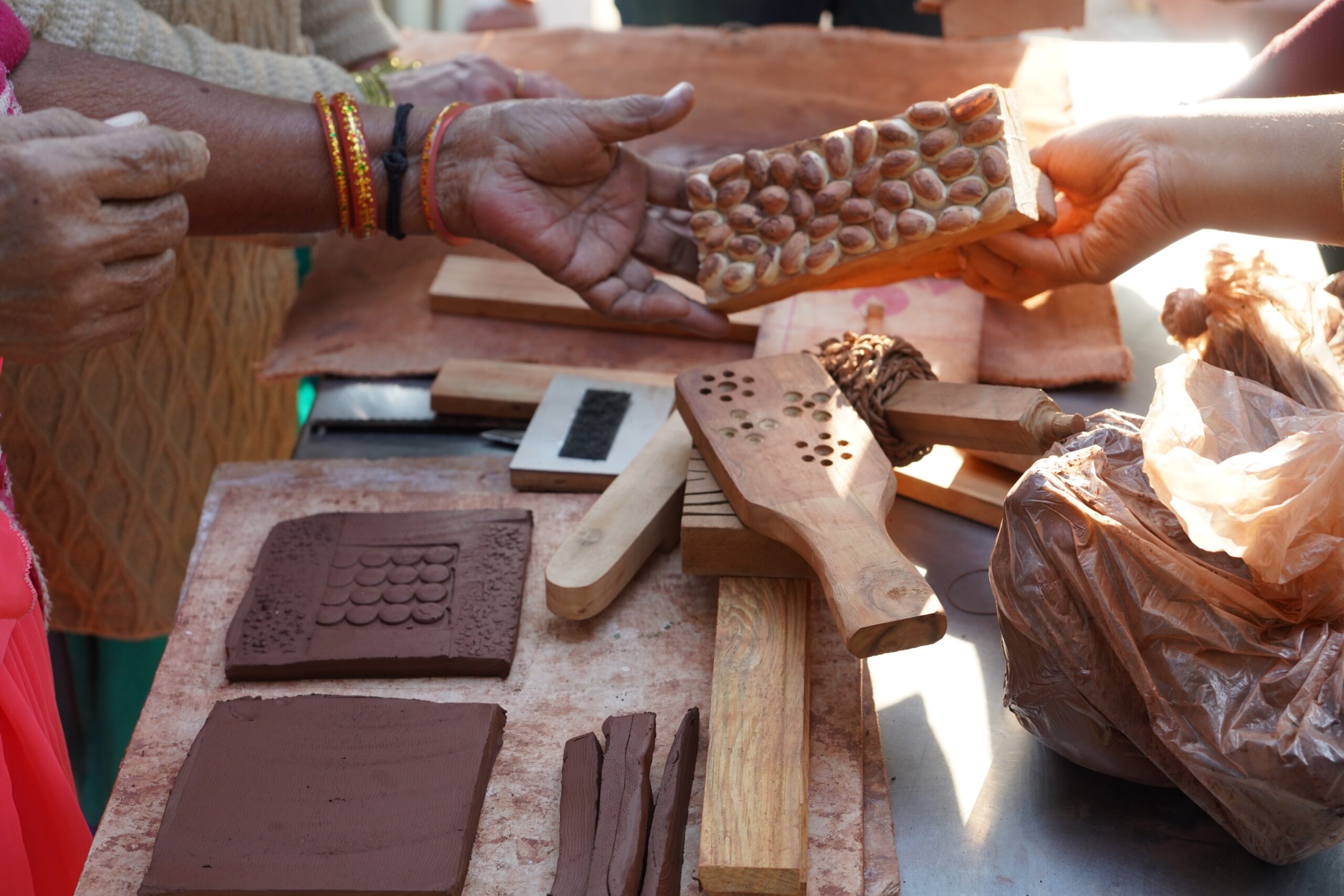DATE
2024/12/9 – 12/21
LOCATIONS (Ahmedabad, India)
National Institute of Design
Sarkhej
FACULTY MEMBERS
Katsuhiko Hibino (President of TUA)
Taro Takaoka (Project Assistant Professor, Factory Lab,Tokyo University of the Arts)
Maria Hata (Project Assistant Professor, Geidai Platform of Arts and Knowledge for the Future, Tokyo University of the Arts)
Mei Miyauchi (Project Research Assistant, Global Support Center, TUA)
Cooperation: Elderly Care Facilities
Matrudham Vrudhhaasham
Shree Maniben Tribhuvan Matragruh
Vatsalya Senior Citizen Home
LOCAL COORDINATION
Drishti Desai (OPEN ELECTIVE 2024 TEAM, NID)
CERAMIC STUDIO INSTRUCTION SUPPORT
Anand Prajapati
Prachi Ghanekar
Ranjeet Sinh Solanki
Bharat Kumar Prajapati
INTERPRETATION
Aditi Modi (English – Gujarati, NID)
Haruka Ueda, Yuki Harukawa (English – Japanese: online lecture)
The program Care through Art with the Elderly was conducted as a class inspired by the art project TURN, initiated by Tokyo University of the Arts. It explored how art and design can be applied to address issues faced by local communities and welfare facilities. Starting from a collaborative project with the elderly that took place in Poland in 2019, this class invited artist Taro Takaoka, who developed that project, as a lecturer. Through research visits to welfare facilities and a series of workshops, students deepened their understanding of interaction and collaboration with elderly people. Each student then designed and presented their own project, discovering new methods of communication and possibilities for sustainable collaboration through art and design.
The class also emphasized the relationship between clay as a material and tools as a medium. Clay records the traces of touch with remarkable precision, preserving time and memory, while tools must be adapted to the material, the environment, and the hands that use them. Through these hands-on experiences, students explored the social and emotional meanings embedded in the acts of touching and making.
The TURN Project aims to highlight individual uniqueness by engaging with differences in disability, age, gender, nationality, and living environment. Based on this philosophy, the class offered students an opportunity to experience the process of mutual understanding through direct engagement with local communities and welfare facilities. Over the course of two weeks, the program evolved from interaction with clay and tool-making to field visits, workshops, and a final exhibition that brought together all the experiences.
The students visited three elderly care facilities in Ahmedabad, each with different structures and operational backgrounds, ranging from short-term stays to long-term residences. At the Vatsalya Senior Citizens Home, run by the Red Cross Society of India, residents led independent lives and actively participated in creative activities. Their enthusiasm and curiosity made the workshops highly interactive and collaborative. At Shree Maniben Tribhuvan Matragruh, students received direct feedback from the elderly on tool design and learned valuable lessons about making through practice. These encounters became meaningful experiences that went beyond simple artistic exercises, fostering genuine mutual understanding and respect.
The final exhibition, titled “Clay Captures Memory,” was built on the idea that clay remembers every touch. The works presented were not about producing perfect objects but about cherishing the shared process of interaction. The impressions and gestures left on the clay’s surface embodied everyday movements, memories, and stories told through conversation. The elderly participants were not treated as dependents but as active collaborators, co-creating artworks that reflected moments of connection and emotion. Art, in this context, became a medium for dialogue and empathy.
In conclusion, while implementing TURN in Japan would require long-term engagement, this class served as an important starting point to explore how such an approach might inspire new perspectives in the future. Instead of focusing on making tangible objects such as bowls or cups, students were encouraged to create a “pattern”—a framework they could continue to develop through future interactions. Through both lectures and practice, students quickly internalized the essence of the project and transformed it into their own creative process. The final exhibition reflected their sincere learning experiences, including the moments of uncertainty and discovery they encountered along the way. This activity was not an endpoint but an opening—an invitation to continue the discussion and further develop the ideas cultivated through this program.
The Care Manifesto presented at the end of the class expresses the belief that aging should not be seen as a limitation but as a unique form of self-expression. Art creates opportunities for meaningful encounters that celebrate individuality and difference. True care emerges through being together—through the presence of others, the desire to communicate, share, and connect is born. By creating and experiencing beauty together, we cultivate empathy and transform isolation into connection. In doing so, everyone becomes a protagonist in a shared story. This program embodied that very ideal—building a society where art and care intertwine to nurture understanding and togetherness.
